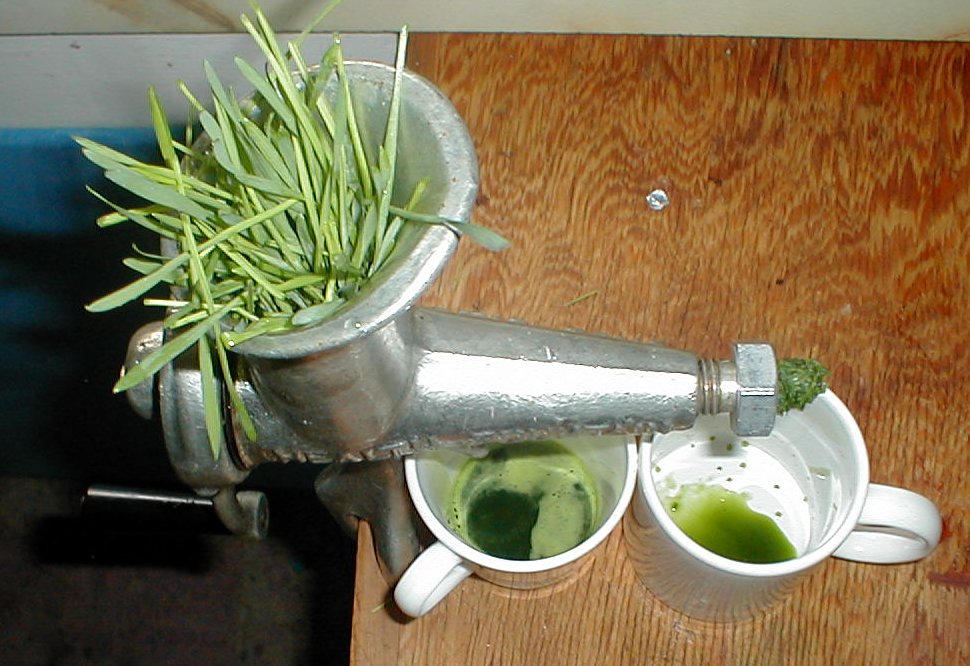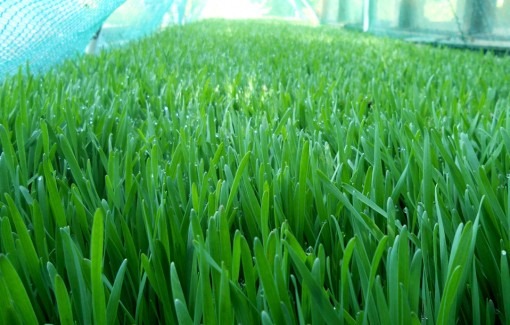Wheatgrass has long been the topic of discussion for many health enthusiasts for several good reasons. Wheatgrass is made from the Triticum aestivum plant and is packed with an amazing combination of nutrients. It also acts as a tonic, helps with digestion, and boosts metabolism. Wheatgrass also contains antioxidants and anti-inflammatory chemicals. Chlorophyllin wheatgrass helps keep the liver healthy. All of these reasons make wheatgrass, something you should take daily. If you don’t know how to include this superfood in your diet, follow the tips mentioned below.
Start With a Smoothie or Juice
There are multiple ways to include wheatgrass in your daily eating habits. The easiest thing you can do is simply add a little wheatgrass to your shake. The sweetness of the blend will knock out the strong “green” flavor. You can simply add fruits of choice with a few blades of wheatgrass. Making a wheatgrass smoothie is also a very good way to give wheatgrass to picky children.
If you’re interested in a wheatgrass smoothie, you can add oranges and pineapple to a blender with some coconut milk. The acidity of the pineapple and oranges should hide the grassy flavor, and the addition of coconut milk makes it taste almost like a Pina colada. You can also add vanilla, peppermint, and almonds to wheatgrass, and make a minty wheatgrass smoothie.
Another good way to consume wheatgrass is to juice the blades. However, this juice may be difficult to drink, as it will have a very strong grassy flavor. Still, if it’s your cup of tea, here’s how to make a juice out of wheatgrass blades. First, start with about 300-350 grams of wheatgrass. If you’re growing your own, make sure to cut the blades as low as possible. Thoroughly rinse the blades, and let the excess water drip out. Add small amounts of wheatgrass to your juicer, until you’ve juiced all your grass. The juicer blades might occasionally get jammed, so you need to manually remove the pulp from the blades.
The second method of making wheatgrass juice is to make it in a blender. However, this method needs water which dilutes the juice. All you have to do is add your wheatgrass to your blender with a few splashes of water. Simply blend on high speed for 2-3 minutes. Once the mixture is blended, you need to run the juice through a fine strainer or muslin cloth. This will filter out the fiber from the juice and make it easier to drink. Drinking blended wheatgrass juice is diluted, and so is a better option than wheatgrass juice made in a juicer, especially if you have just started consuming wheatgrass.
Suggested Reading – Caffeine Alternatives for Getting Started in the Morning
Consume Wheatgrass Powder
If wheatgrass juice doesn’t suit your fancy, you can always switch to wheatgrass powder. However, juice or a smoothie made from fresh wheatgrass will have more nutritional value. Still, making wheatgrass powder can help you utilize the fiber content of wheatgrass. If you’re using a juicer, it automatically removes the fiber and pulp. If you’re blending wheatgrass with water, you will eventually need to filter it to be able to drink it. In the case of wheatgrass powder, the fiber content is there which is very good for you.
Also, when juicing wheatgrass, a lot of the grass goes to waste in the form of pulp. Since wheatgrass is so expensive, it hurts to throw anything out. If you don’t want to throw out so much pulp, make a powder out of the wheatgrass.
You can simply consume wheatgrass powder by itself in the morning. The recommended daily intake of wheatgrass powder is 30 ml. You can either purchase some wheatgrass powder from the market or just make your own wheatgrass powder at home from some raw wheatgrass. If you are making your wheatgrass powder, here’s what you need to do.
Step 1
You can either purchase some fresh wheatgrass or use some you’ve grown yourself. If you’re harvesting home-grown wheatgrass, you need to cut it ½ inches above where the soil starts.
Step 2
Next, you need to completely dehydrate the wheatgrass blades so you can powder them. Spread your fresh wheatgrass evenly on a baking sheet, and avoid piling the blades on top of each other. Place the tray in a baking oven at 200 degrees Fahrenheit for 2 hours. After 2 hours, the blades should be completely dry and brittle.
Step 3
Add all your wheatgrass into a coffee or spice grinder. Switch the grinder on and grind the grass blades for 30 seconds per batch. Tap the sides of the container every 10 seconds, to get rid of any lumps that might have formed. This will also help make sure all the wheatgrass has been blended properly.
Step 4
Once all the wheatgrass has been ground, it’s time to store it. You can store your wheatgrass powder in airtight containers or Ziploc bags. Store them in a cool place and avoid adding anything wet to the powder. Sun exposure can reduce the nutritional value of wheatgrass.
Now that you have wheatgrass powder, here’s what else you can make out of it. You can add wheatgrass powder to water, and rehydrate it to form wheatgrass juice. You can also add wheatgrass powder to yogurts, salads, and other foods.
Buy Wheatgrass Supplements
There are several wheatgrass supplements available on the market. Taking wheatgrass in the form of supplements is comparatively easy as it consumes less time and energy. However, because these supplements are available under brand names, they are very expensive. To constantly invest in capsules is very difficult. Nonetheless, they also have their benefits. Taking wheatgrass as a capsule is perfect for people who don’t like the flavor of wheatgrass, but still want to consume it for its nutritional value.
Wheatgrass supplements are also very beneficial for people that are busy with work. Not only is wheatgrass a very good source of energy, but taking a wheatgrass pill is very easy. Making a juice, shake or powder is time-consuming, which may make people avoid wheatgrass altogether.
Also, since wheatgrass is normally taken raw, there is a considerable risk of bacterial infections from the grass. This is very harmful to people with compromised immune systems, especially children or the elderly. If stored in unhygienic conditions or left unrefrigerated for too long, wheatgrass juice can have bacteria growing in the top foam of the juice. This bacteria can then spread to the rest of the liquid. Also, if you are drinking wheatgrass juice or shake in a restaurant, there is no way to know for sure if the conditions were hygienic. If prepared at home, it is perfectly fine.
Wheatgrass can also be very nauseating, and while you do get used to it, the short experience is enough to make people give up wheatgrass. People have also complained of hives, constipation, and headache after consumption. Wheatgrass pills are less nauseating but be sure to consume those that are made in strictly monitored conditions. An “FDA-approved” tag on the supplements will help you out in picking the right one.
There are several wheatgrass supplements available online, or you can buy yours from a nearby vitamin or supplement store. Read through the instructions carefully before use. You may feel slight nausea after consumption, however, the symptoms should not be very severe. If your symptoms persist, stop taking the pills. If your condition still does not improve, get in touch with a doctor immediately.
Some people also consume wheatgrass because it is considered quite a helpful natural item for various sleep issues. Find out about the best supplements for Wheatgrass consumption over here – Wheatgrass For Sleep Issues
Conclusion
Wheatgrass is a very good source of multiple nutrients like Vitamin C, Vitamin E, Vitamin A, iron, magnesium, calcium, and amino acids. The first few weeks of consuming wheatgrass can cause nausea and vomiting. This is because the body isn’t used to the flavor and constituents of the grass. Nausea should go away eventually. Until then, you should drink wheatgrass in the morning on an empty stomach. Wait another half an hour before eating anything, to prevent vomiting. However, it is advisable for women that are pregnant, and people with sickness or weak immune systems, to avoid wheatgrass.






